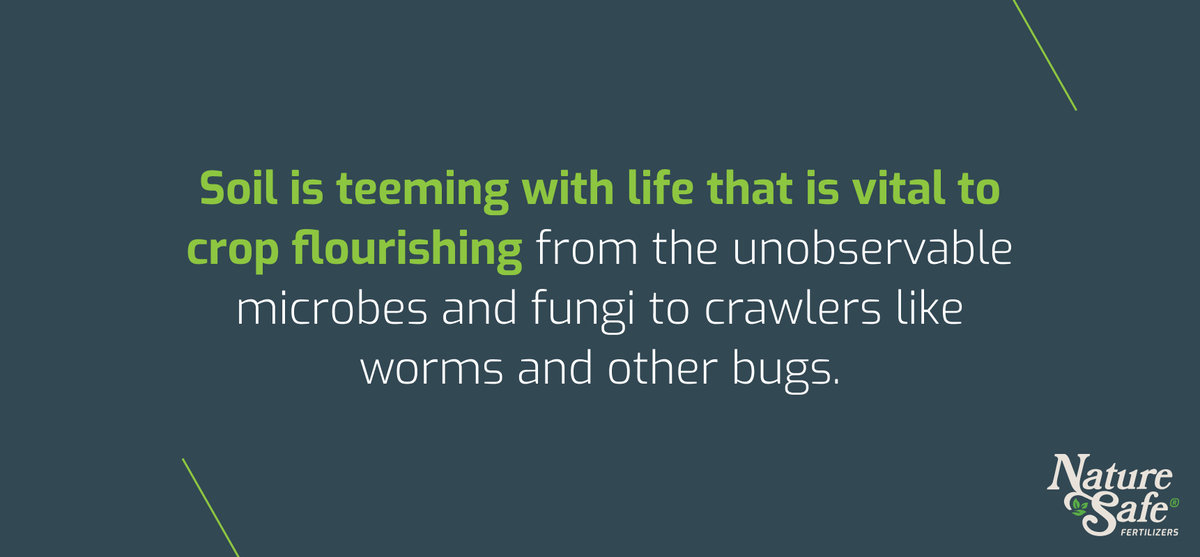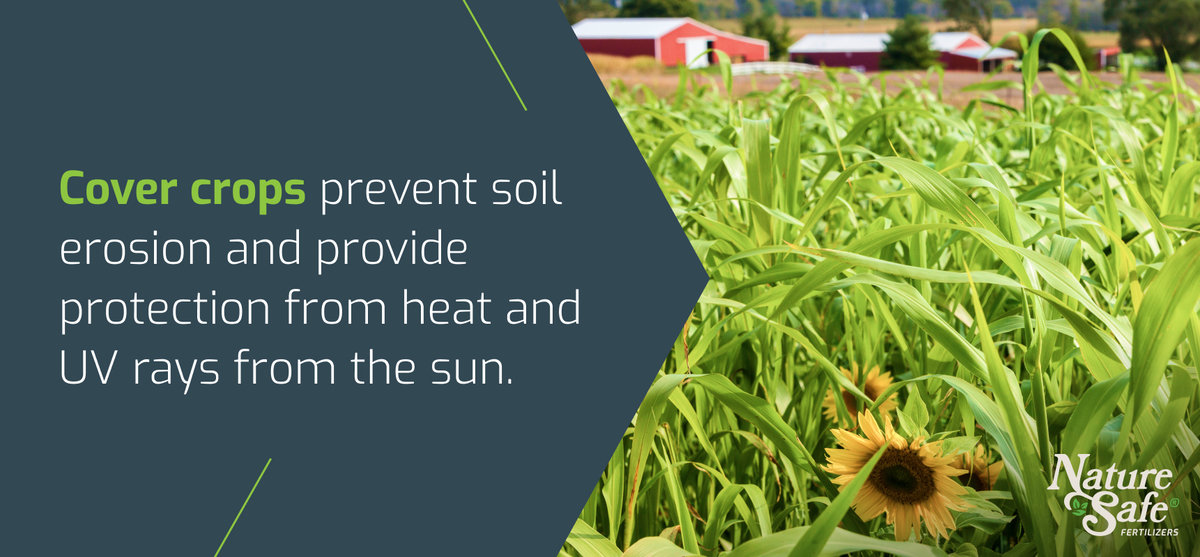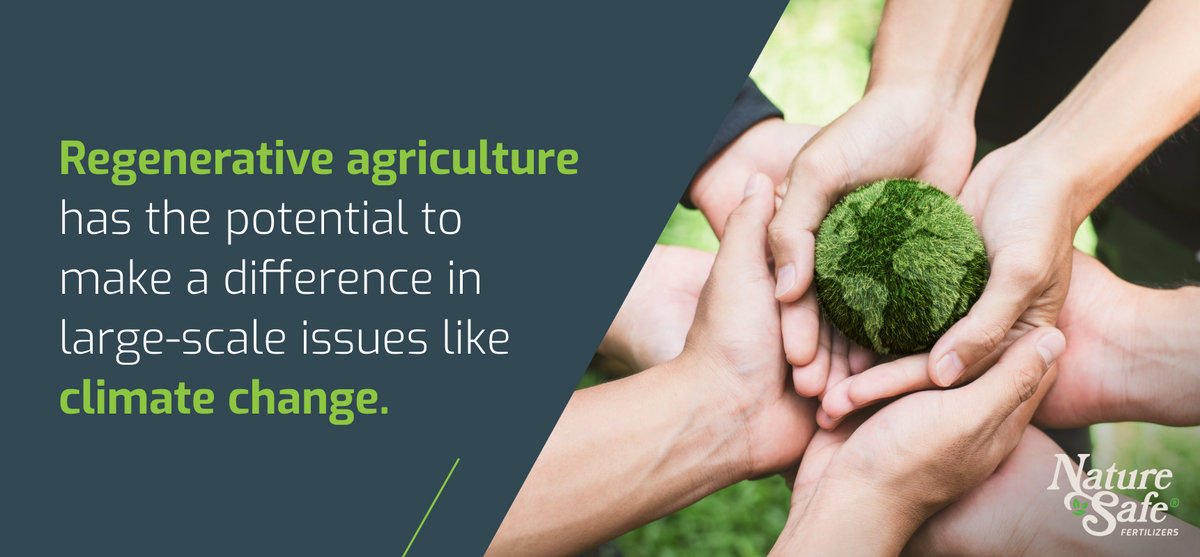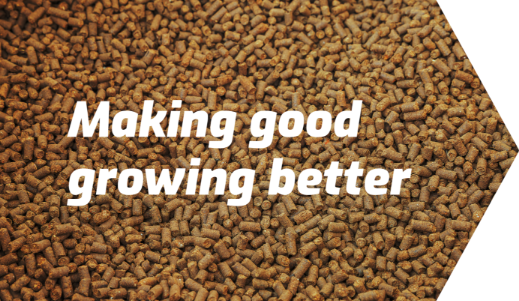
Regenerative Agriculture Basics
How Does it Help Create a More Sustainable Future?
- Posted: May 11, 2022
- Author: Nature Safe Fertilizers
- Crop
To regenerate something is to make it healthy again by replacing or reforming the unhealthy parts—similar to a “reset” or “recharge”. Regenerative agriculture (also known as regenerative farming) is way of farming that creates and maintains healthy soil for more productive farming and a cleaner environment.
Practitioners of regenerative agriculture aim to return the soil, the surrounding land, and the overall environment to a more flourishing state.
Principles of Regenerative Agriculture
At its core, regenerative agriculture is a more sustainable farming philosophy that focuses on the longevity of the land. Improving the land naturally can pave the way for other sustainable and ethical farming practices. Some core principles behind regenerative agriculture include:
Soil Health Leads to Plant Health
“Soil” is far more than just dirt. It is full of microorganisms and nutrients that feed the plants through their roots. Since soil health directly affects plant health, when the soil is full of nutrients, it passes these along to whatever crop is sown into it.

Limit Soil Disturbance
Additionally, soil is teeming with life that is vital to crop flourishing from the unobservable microbes and fungi to crawlers like worms and other bugs.
Something unique to regenerative agriculture is that it rejects the common practice of conventional farming practice tilling the soil. This is to allow all of these organisms to do their important work, unhindered.
Ecosystems are pretty good at regulating themselves, including those under the earth. Heavy tilling is unnecessary and can completely upend the ecosystems in the soil.
Reduce Synthetic Chemicals—Go Organic
Chemical pesticides may kill pests, but more-often-than-not, they eradicate the good, soil-supporting bugs while failing to be effective at eliminating pests. The National Center for Biotechnology Information conducted a study that found pests were 10 times as abundant in insecticide treated corn fields compared to regenerative fields.
Artificial fertilizers and pesticides are reactive, whereas the goal of regenerative agriculture is to be proactive.
Improve the land
Perhaps the most fundamental pillar of regenerative agriculture is the idea that farmers are not just going to avoid ‘hurting’ the land, but, instead, are actively trying to make it better. Some commercial farming practices have been harmful to the earth, and regenerative agriculture aims to repair the damage. The goal is to heal the land by considering the longevity of the life of the soil.
What are Regenerative Agriculture Practices
Each method of regenerative agriculture plays an important role. Some methods can’t be done in isolation, but by implementing multiple regenerative agriculture ‘best-practices', the benefits and overall well-being of the farmland will be noticeable quickly.
Avoiding “Resting” the Soil
A common way to phrase this practice is “keep roots in the soil.” The tiny bugs like the fungi and bacteria that live in the soil have a symbiotic relationship with the plants. They feed the larger bugs that provide nutrients for the plants. By always having something planted, the soil will maintain this activity and stay healthy.
Cover Cropping
Cover crops are a great way to keep roots in the soil. They protect the soil by, as the name suggests, adding coverage. They are beneficial for small gardens and large farming properties alike. They prevent soil erosion and provide protection from heat and UV rays from the sun.

Diversify Your Crops
Another benefit of cover crops is that they add biodiversity to the soil’s ecosystem. Biodiversity is one way ecosystem health is measured. Having a bunch of different species of plants and animals means more mutually beneficial relationships. Some plants are better at providing nutrients into the soil than others, and some plants benefit from certain nutrients more than others.
Grazing Livestock
It might seem counterintuitive to put livestock on land with crops, but it is extremely beneficial to the soil health. Not only is manure a great fertilizer, but rotating grazing grounds prevents soil erosion and promotes weed control.
Compost
If the soil needs a little boost of nutrients, a great organic way to do that is by composting. Compost is a way of breaking down organic matter, leaving just the good stuff in. Any unusable crops or waste from harvest can be utilized in compost.
*Why* Practice Regenerative Agriculture?
Regenerative agriculture doesn’t just benefit the microorganisms in the soil. The positive impacts of this method start small, but can snowball into big effects that have the potential to make a difference in large-scale issues like climate change.
We know healthy soil leads to healthier plants, but what does that mean for the farmers? The same study by NCBI mentioned above also found that, while regenerative farms show smaller yields, they show higher profits due to healthier, more robust plants and soil that can be consistently planted.
Promoting biodiversity in agriculture is not simply a matter of varying which crops are planted, but can extend into a much wider variety of foliage. Anything with a flower, for example, attracts pollinators like bees that need that nectar for food. Cover crops can also attract insects or other animals that eat pests.

The Big Picture
Keeping roots in soil and leaving as little ground uncovered as possible is good for both the soil *and* the climate. As long as farmers and ranchers work with the land and don’t clear forest away for farms, more plants means more oxygen and less carbon in the atmosphere.
This philosophy forces farmers and ranchers to address their environmental impact and respect the earth. The land they sow their crops on will be healthy, but they also need to make sure that what they plant makes sense in the ecosystem that already exists there.
The National Resource Defense Council emphasizes community needs as a principle of regenerative agriculture. This means avoiding practices like planting crops that need a lot of water in the desert or using potentially invasive species as cover crops.
By sticking with environmentally-sound principles and implementing thoughtful practices, regenerative agriculture can play a part in a sustainable future. And not just sustainable, but better than before.
Nature Safe Fertilizers has organic and fortified products to improve soil health and help your farming operation implement regenerative methods of farming. You know what your commercial crops, turf, and gardens need, and we’re here to make your good growing better. Call us at 800-743-7413.
